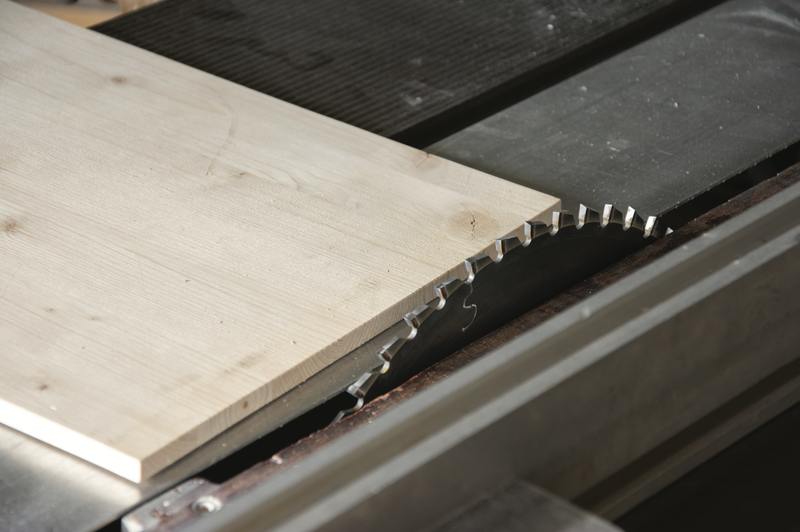Have you encountered a problem recently with mold from plywood? This article will provide the essential knowledge on how to remove mold from plywood and will surely be a great help.

Steps In Removing Mold From Plywood
Every type of wood is susceptible to mold infestation. Even strong wooden floors are not exempted to mold spreading, unless they are engineered to become resistant to mold spores.
Here is a simple guide on removing mold from wooden floors.
When you spot mold growth in piled plywood, it is recommended to remove the infested ones from others to avoid the mold spores from spreading. Subsequently, thoroughly clean the affected area to ensure removal.
Step #1. Preparation
Before anything else, you need to make sure of your health and safety. Prepare Personal Protective Equipment (PPE) and other cleaning materials.
It is necessary to wear gloves, safety goggles to avoid spores getting into your eyes, and a respirator while working with mold. If possible, wear comfortable old clothes as you will be using bleach in eradicating mold.
If you want your time of cleaning mold to become efficient, ready all the cleaning materials that you will be using. Make sure to have cleaning wipes, a dry cloth, a spray bottle, a bucket of water, and a brush.
Step #2. Cleaning methods
There are several methods you can apply when cleaning mold on plywood — vacuuming, hosing, wiping, and scrubbing.
If you have vacuum equipment at home, vacuuming mold on the plywood surface area would be the most convenient way. However, it is recommended to clean the vacuumed area again since some of the mold may stay there even after you cleaned it.
Another easy way of removing mold from plywood is through water hosing. All you need to do is hold the hose and wash the affected surface areas with enough pressure.
After that, let the plywood dry up and it’s good to go. You can also wipe the mold in the surface area of plywood with an old rag to remove any mold residue.
Lastly, scrubbing the affected surface area of plywood is a convenient alternative.
Step #3. Diluted vinegar solution
A diluted vinegar solution is simply a mixture of water and vinegar with a ratio of 1:1 and is commonly used as a cleaning agent at home. Vinegar has a natural anti-fungal property and provides deodorizing effects to mold.
To apply a diluted vinegar solution, put the solution in a spray bottle and spray on the moldy areas in plywood. Let it soak for hours before rinsing.
Step #4. Bleaching
Bleach is the most common disinfectant that can be bought in any grocery store. Any type of mold can’t withstand the strong effect of a bleach solution.
Using a brush and an old rag, dip into the bleach solution and apply it to the affected areas of the plywood. Let the bleach saturate the surface of the plywood to prevent mold spores from spreading.
Step #5. Water-repellent treatment
After the mentioned steps above, you probably want to prevent mold spores from growing again. Luckily, a water-repellent treatment can ease your worry.
Just apply it on a treated surface area of the plywood and it’s ready to polish.
Now, you already know the steps in removing mold from plywood. So, let us know more about mold on plywood and what causes mold invasion.
Mold On Plywood
Plywood has long been used as an alternative material in construction and structuring. It is made of different types of wood fibers and other wood waste materials that are bound with chemical additives as part of the manufacturing process.
We all know that plywood is a type of composite wood material that is used in structuring partitions, ceilings, sheathing, and other numerous purposes. Being composite, it is prone to decomposition and infestation of a variety of mold.
Mold on plywood can be seen in different colors, such as black, orange, and yellow.
What causes mold infestation on plywood?
Mold thrives in areas where there is moisture, organic matter, and oxygen. The spores it releases can grow rapidly in certain amounts as it travels in the air.
Usually, plywood is placed outdoors and is therefore exposed to rain, humidity, and different conditions that could spread mold spores. In the case where plywood is already structured, nasty mold infestation could grow if there is excessive moisture.
This excessive moisture may come from leaky pipes or rain drops. Also, plywood that is used in the attic and basement of your house is prone to mold growth due to lack of ventilation.
Therefore, it is important to regularly check your house if there are leaks and damp areas.
Conclusion
Mold infestation is indeed a problem and a crucial topic to talk about. It is like an uninvited guest that gives problems to everyone.
Do everything to eradicate this unpleasant display in your home. Being able to learn how to remove mold from plywood, you can perform necessary treatment depending on the severity of mold infestation.
